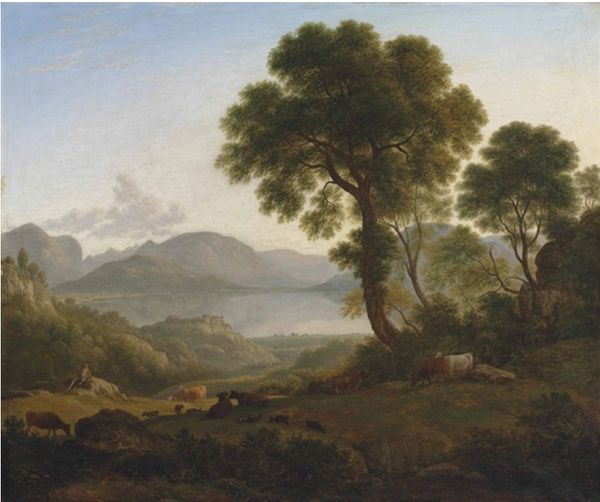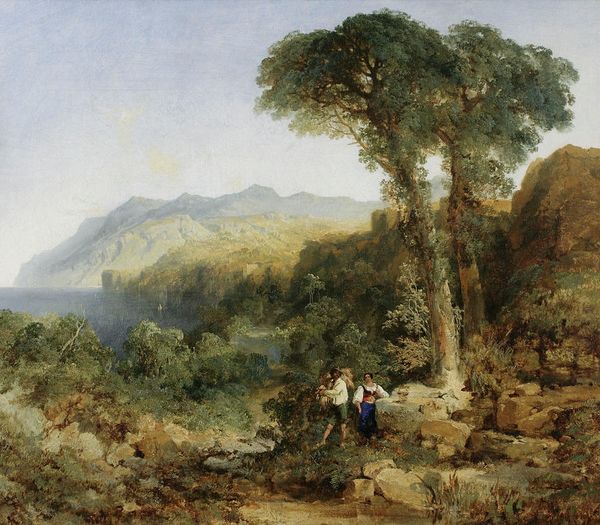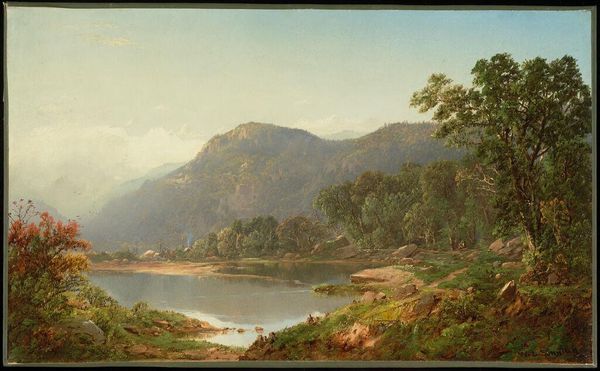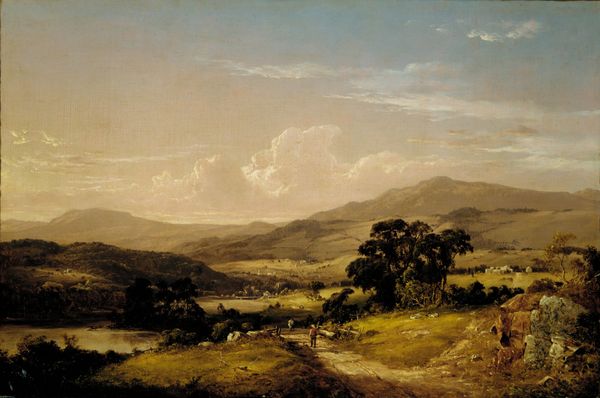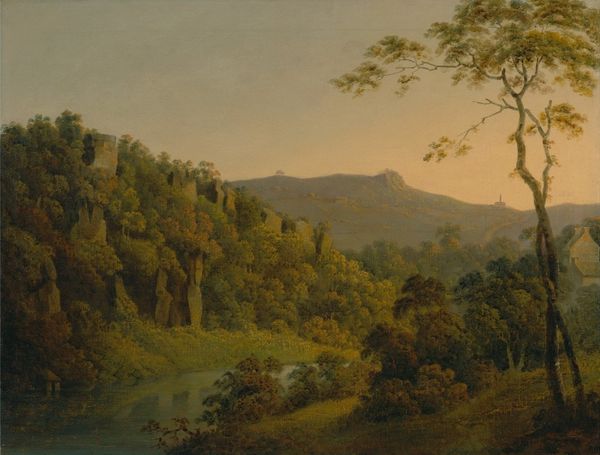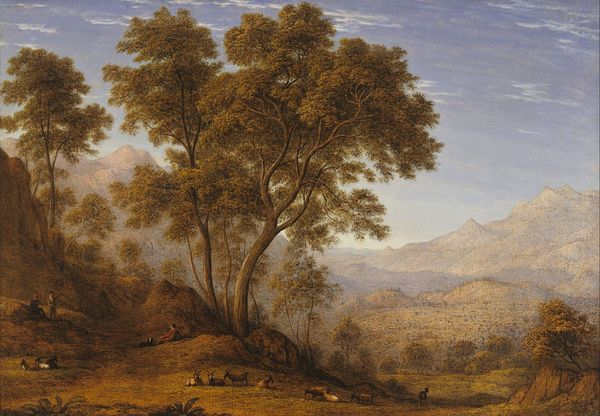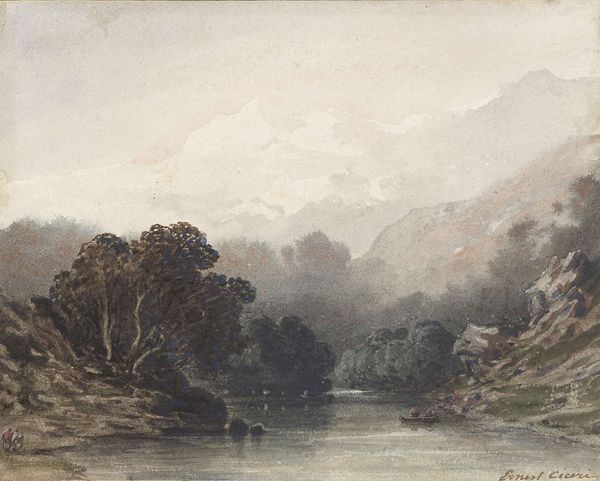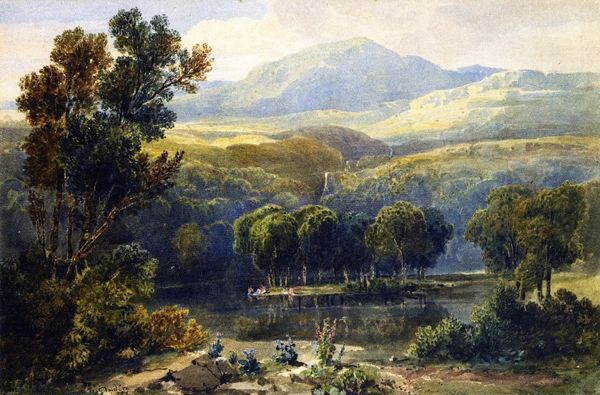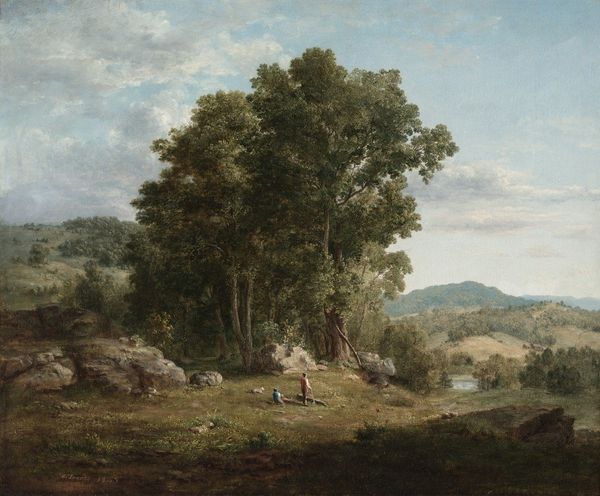
painting, plein-air, oil-paint
#
painting
#
plein-air
#
oil-paint
#
landscape
#
oil painting
#
hudson-river-school
#
realism
Copyright: Public domain
Curator: The hush of a summer afternoon just sighs right out of this canvas. It's remarkable. Editor: Indeed. David Johnson painted this landscape, "In the White Mountains," in 1858. It's an oil on canvas, very much in the style of the Hudson River School. It's a stunning example of American realism, focusing on the grandeur and sublime beauty of nature. Curator: Sublime is right. Those layered blues receding into the distance, that hazy peak...it's like he’s trying to capture not just a view, but a feeling, a kind of serene contemplation. The couple walking the path grounds it somehow. Are they part of that feeling? Editor: Absolutely. Their presence offers a point of connection, a sense of scale, a human relationship with the natural world being depicted. The White Mountains were increasingly popular as a tourist destination at that time. This work catered to that public's developing sense of a national, landscape-based, identity. Curator: The detail! The leaves, the rocks, the way the light filters...It's meticulous. I’m interested in the interplay between the vastness of the panorama and this almost scientific observation of individual elements. He captures the light in such a delicate way. It invites intimacy. You could almost hear the crickets. Editor: And there's the inherent tension within Hudson River School paintings—the detailed realism coupled with a desire to convey an almost spiritual sense of the landscape. Think about it: this work was made right before the Civil War, a time of intense national introspection and anxieties, where paintings like these offered solace in the imagined stability of the land. Curator: It's a perfect piece for this museum; something about the air, the quiet dignity of it, captures our New England spirit so well. I keep being drawn to those walking figures – perhaps they are in pursuit of this American spirit, too. Editor: Perhaps they are us! Approaching this image from the modern perspective we now possess. It is an intriguing point you make and brings us full circle back to Johnson's intentions, I feel.
Comments
No comments
Be the first to comment and join the conversation on the ultimate creative platform.

